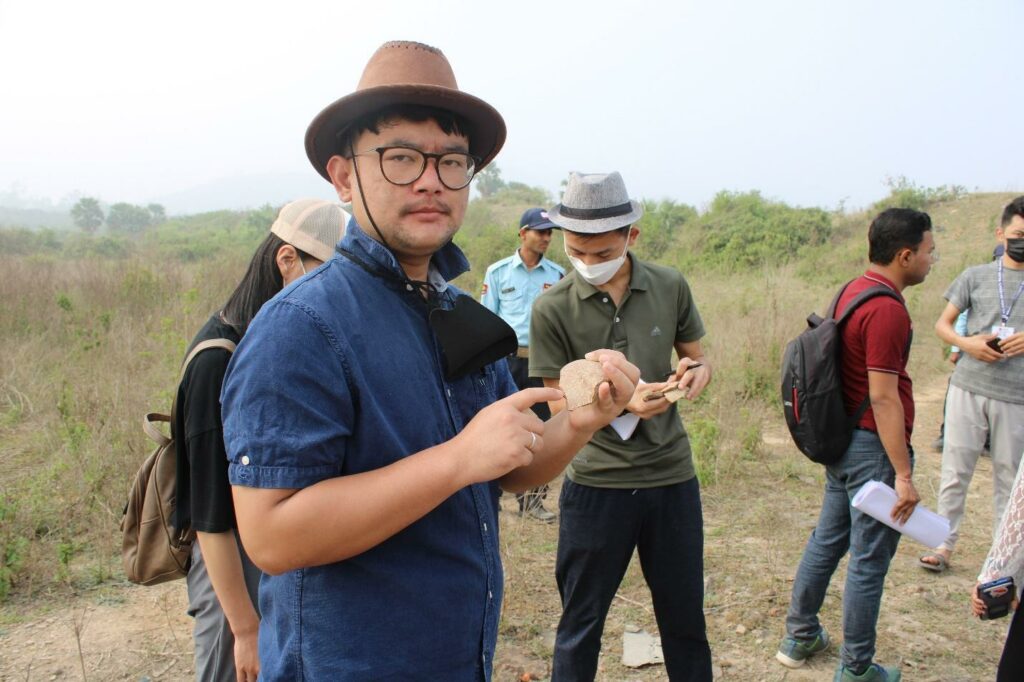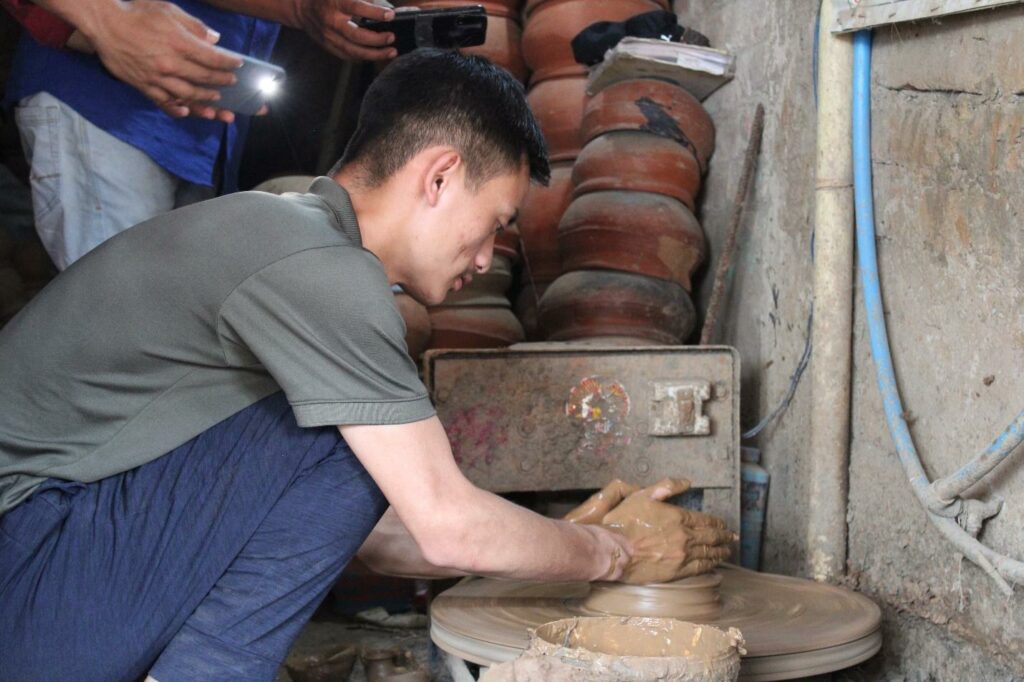Field Trip to Rajgir Archaeological Sites School of Historical Studies (SHS)
April 3, 2022
A field trip to the archaeological sites of Rajgir was conducted on 03.04.2022 by the faculty members of the School of Historical Studies. The students were educated about the following archaeological sites: Ajathasatru fort, Cyclopean wall/fortification wall of old Rajagriha city, inner rampart, chariot wheel marks site, ancient shell script site, Chorma Cave, Maniyar Math, and Swarn Bhandar Cave by this visit. They also explored, observed, and experienced various geological features of Rajgir Hills.
Practical field methods were demonstrated to understand surface archaeological finds, historical pottery, ancient script, art and architecture, military architecture, fort, fortifications and bastions. The minute details of the southern Cyclopean wall and bastions of the ancient Rajagriha city; its construction pattern, functions and issues related to its conservation and preservations were studied. The ancient chariot wheel marks on the rocky surface of Udayagiri foothills reveal the ancient trade route. The shell script inscription found at the site tells about the nature of the scripts. The Chorma cave exemplifies the types of the cave used for prehistoric habitation and succeedingly reoccupied during the historical times. The preparation of the habitation floor inside the cave indicates its being occupied by some important Buddhist/Jain monk and makes it unique among all other caves in the area. Students undertook the adventure of climbing and exploring inside the cave and learned about the formation processes related to archaeological deposits.
Ethnographic field trip to Potters workshop
Students were taken to potters’ workshops located at Giriyak road in Rajgir to experience the pottery making practices. This visit developed their ethnographic observation skills and knowledge of ceramic technology. The students keenly observed the process related to clay preparation methods and raw materials used for manufacturing the pottery. Students observed various ceramic types, technology, designs, shape, size and paintings. The furnace area was visited to learn about furnace size, types of fuel, temperature, and characteristic features of a potter’s kiln area. Overall field trip was exciting for the students to learn about the prehistoric and historic settlement patterns and ethnoarchaeology of the living communities of Rajgir and its surroundings.

Fig.1 Students visiting and learning about the Ajathasatru fort and fortification system

Fig.2. Students tracking on the cyclopean wall near the Banganga river

Fig.3 Students entering the Choma cave

Fig.4 Students exploring inside the Chorma cave

Fig.5. Students and faculties at the entrance of the Chorma cave.

Fig.6 Students at the Pottery kiln to learn about the cermic firing techniques

Fig. 7 Students learning about the pottery types, shapes, and decoration

Fig.8 Students observing the types of historical pottery found at the Archaeological site

Fig. 9 Student experiencing pottery making at a Potter house in Rajgir